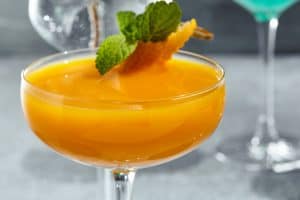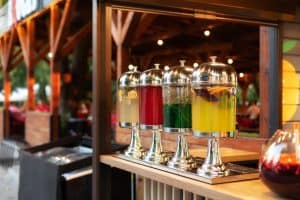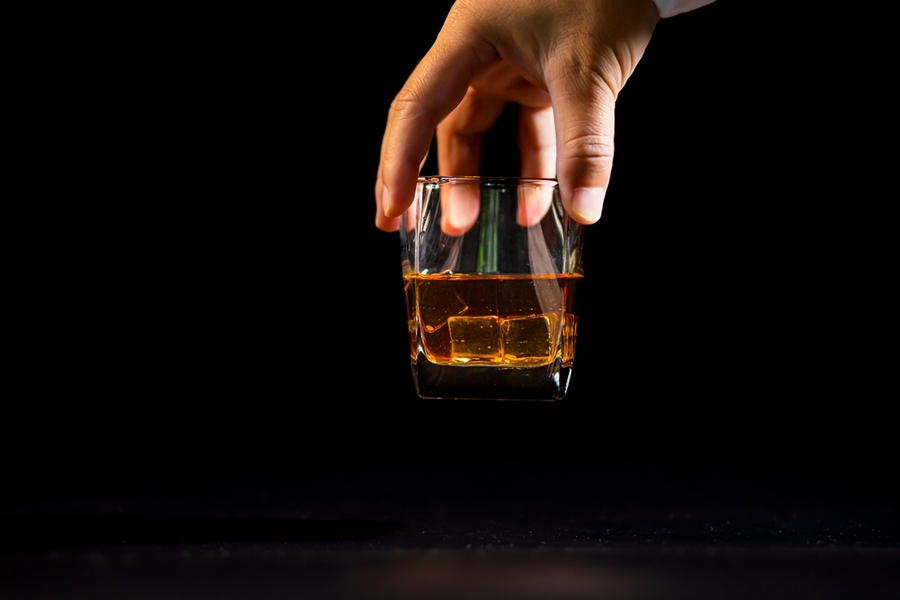
Serving whiskey is both an art and a science. Different ways of serving can influence the aromas and flavors of whiskey.
This probably makes you wonder how to serve whiskey properly.
The type of glass will determine how you serve your whiskey. Temperature is important, as whiskey is best served at room temperature. Adding water to whiskey is a matter of preference. Most experts agree serving whiskey neat is the best. You can, of course, serve whiskey on the rocks or mix up some cocktails.
We will look at the glassware and serving sizes that you can choose. From there, we’ll consider the different serving options.
Glassware
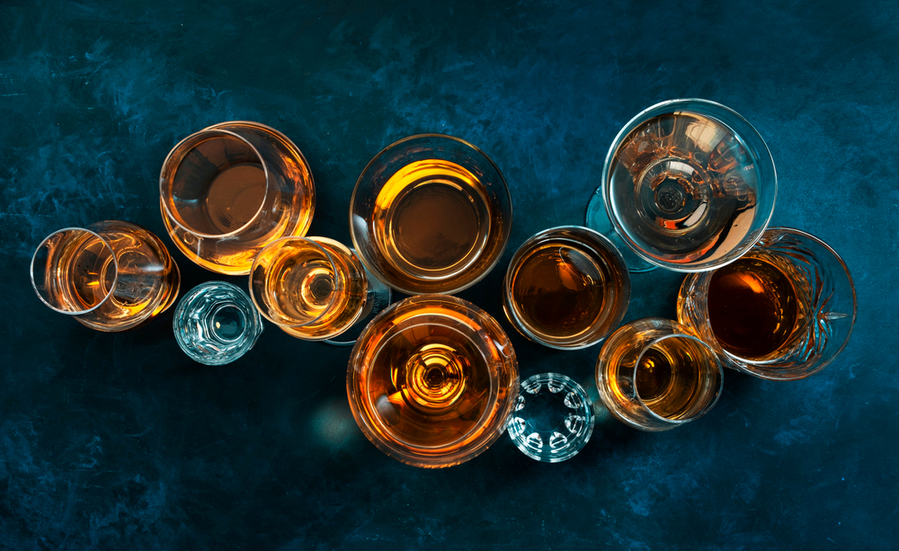
The type of glass you use to serve whiskey has a direct influence on how you serve whiskey.
- The Copita: a traditional Spanish glass for sampling sherry, has become the choice of master distillers and blenders. Its tulip shape concentrates the aromas in the glass’s neck, allowing you to nose the whiskey effectively. The long stem prevents polluting smells from the hand interfering with the smell.
- Glencairn: Related to the copita glass is the Glencairn glass. This tulip-shaped glass has a solid base but lacks a stem. It is also thicker than its Spanish counterpart. They dedicated it solely to whiskey.
- Brandy Balloon: An unrelated relative to tulip-shaped glasses is the brandy balloon or cognac glass. Sometimes also called a snifter. They are commonly used for brandy and designed not to spill when holding the drink slightly horizontally. It is unfortunately not the best choice for drinking whiskey—the wide body and tight rim encourage the release of ethanol vapors masking or ever overpowering the more subtle aromas.
- NEAT: Sometimes you need a bit of science joint with tradition when designing glassware, and that’s very much true for the NEAT glass. For the technically minded, browse the science and specifications behind this unique glass. It’s perfectly shaped to force the harsh ethanol molecules out of the glass, leaving the aromas and flavors intact. Definitely a better choice than a snifter.
- Lowball: They didn’t intend the lowball to be a glass for nosing whiskey. This is the go-to option when drinking whiskey with ice or mixing up classic cocktails such as an old-fashioned cocktail.
- Highball: Last, we look at the highball glass. They mostly used it for serving one of the simplest whiskey cocktails: Scotch and soda. We can also use it for other mixers with whiskey, making a long drink enjoyed while relaxing.
You can look at these options for your own bar or as a gift. Whichever you choose, be sure to enjoy your whiskey by considering the tips which follow.
Serving Size

There are different serving sizes:
- 1.5 fluid ounces, or 45ml, is equal to a ‘dram’ of Scotch.
- A finger is approximately equal to one fluid ounce, or 30ml.
- A full serving is two fingers.
- A glass is generally between 1.5 and 2 fluid ounces (40–60ml), but it depends on what the bar or house determines as their ‘standard’ glass.
Temperature
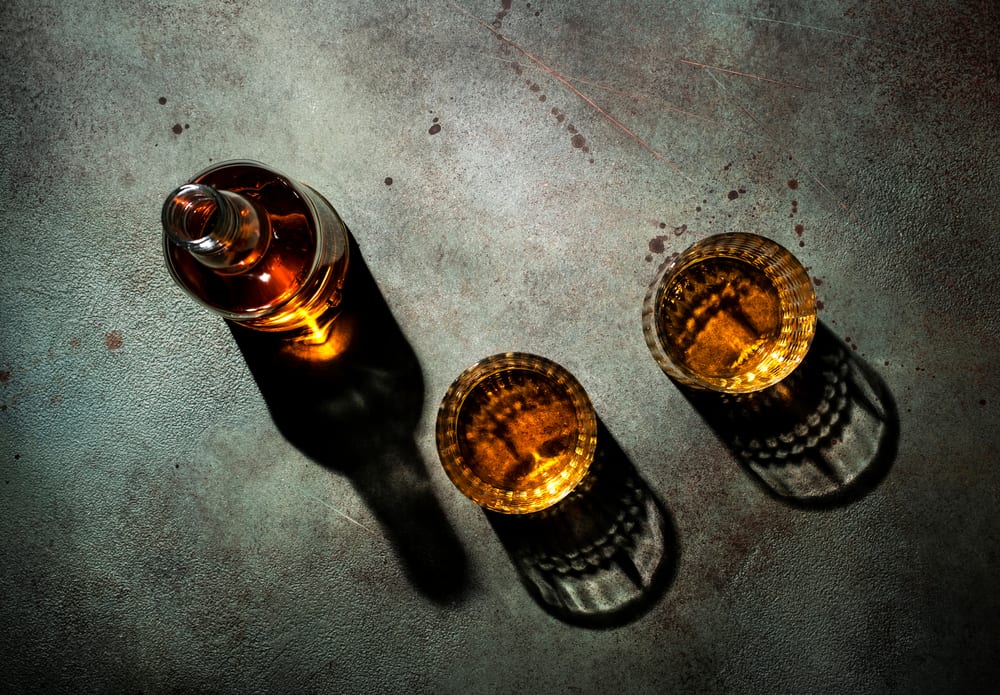
The temperature at which you serve whiskey is also important. The optimal temperature is ‘room temperature,’ according to the experts.
But, room temperature in Scotland’s summer would differ from a summer day in Florida, New York, or California… Ideally, room temperature is between 60 and 65ºF (15–18ºC).
You should keep whiskey in a cool area without temperature fluctuations. If this is not possible, you can chill it in a wine fridge set at the desired temperature, or in case of emergency, chill it in a normal fridge.
Be sure to check the whiskey’s temperature if it ends up in the fridge–if it gets too cold, the chill will mask the flavors and aromas.
Neat? Water? No Water?
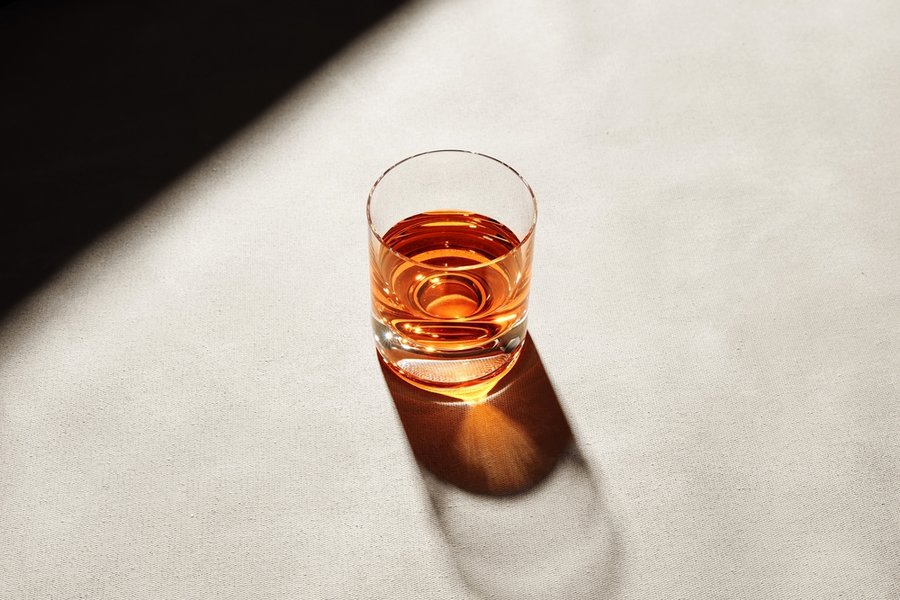
Most experts believe you should drink whiskey neat. There is truth to that statement. The places and people who made your whiskey have a story to tell.
Honor it by having at least one neat whiskey to appreciate its unique aromas and flavors with no ‘interruptions’ from external influences such as water, ice, or mixers.
Adding a few drops of water to your whiskey may open up the flavors and aromas. It also minimizes the alcoholic burn sometimes associated with whiskey.
But Irish and Scottish whiskies younger than 12 years benefit from a few drops of water to help release their flavors and aromas. Older whiskies, over 15 years, have complex flavors, and adding water or ice might actually mask the unique properties.
To Ice or Not to Ice? That is the Question.

Ice is another issue altogether.
Regular cubes melt, water down your whiskey, and are counterproductive to unlocking aromas and flavors. The drop in temperature may also hide some of the whiskey’s unique features.
An alternative to regular cubes would be an ice ball or whiskey stones. An ice ball melts slower, and whiskey stones will not melt and dilute your dram.
A small sip of whiskey is the best course of action. Decide whether you would like to add a few drops of water or even chill it with ice, an ice ball, or whiskey stones.
Cocktails
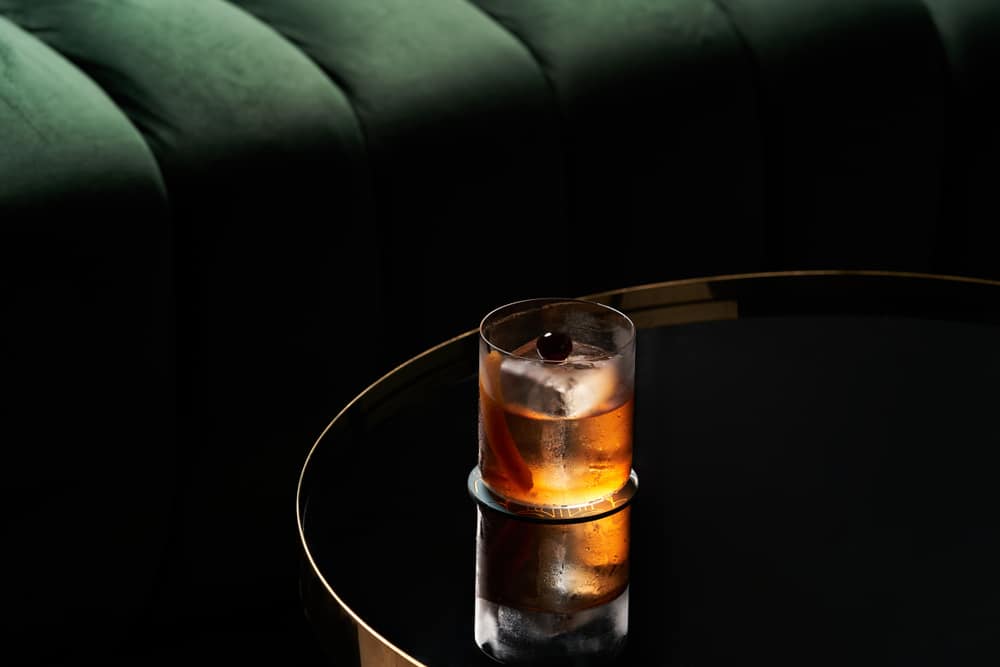
Bartenders, mixologists, and experts have dedicated entire books and blogs to whiskey and whiskey-based cocktails. And rightly so.
Whiskey is one of the most flavorful ingredients whether you drink it neat, with a mixer, or even better, in a cocktail. There is a whiskey cocktail for every feeling you have.
Some ideas to get you started: whiskey sour, Manhattan, and, of course, the old fashioned.
Conclusion
The type of glass will determine how you serve whiskey. Tulip-shaped glasses (copita, Glencairn, snifter, and the NEAT glass) are usually used to serve whiskey neat or with a few drops of water.
Tumblers allow you to add ice or whiskey stones to your whiskey or mix up and serve a cocktail. A highball glass is another great choice if you drink Scotch and soda or enjoy your whiskey with a mixer.
The best temperature is room temperature, but sometimes you need to help the whiskey reach that best temperature by adding whiskey stones or an ice ball. Another great choice for serving whiskey is cocktails.
Whichever way you prefer to drink your whiskey, enjoy it. But, keeping these tips in mind, you can enhance your overall whiskey-drinking experience.


